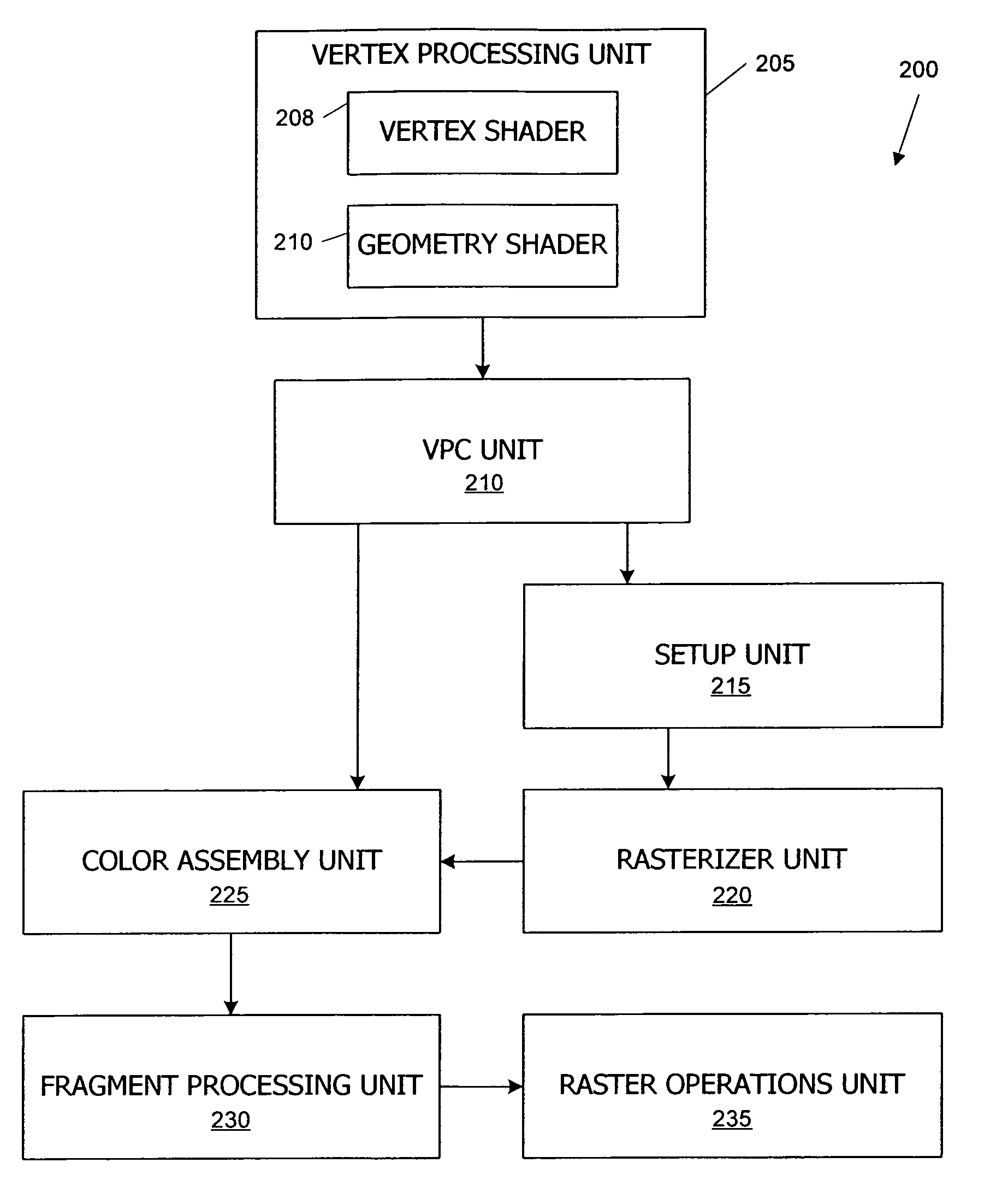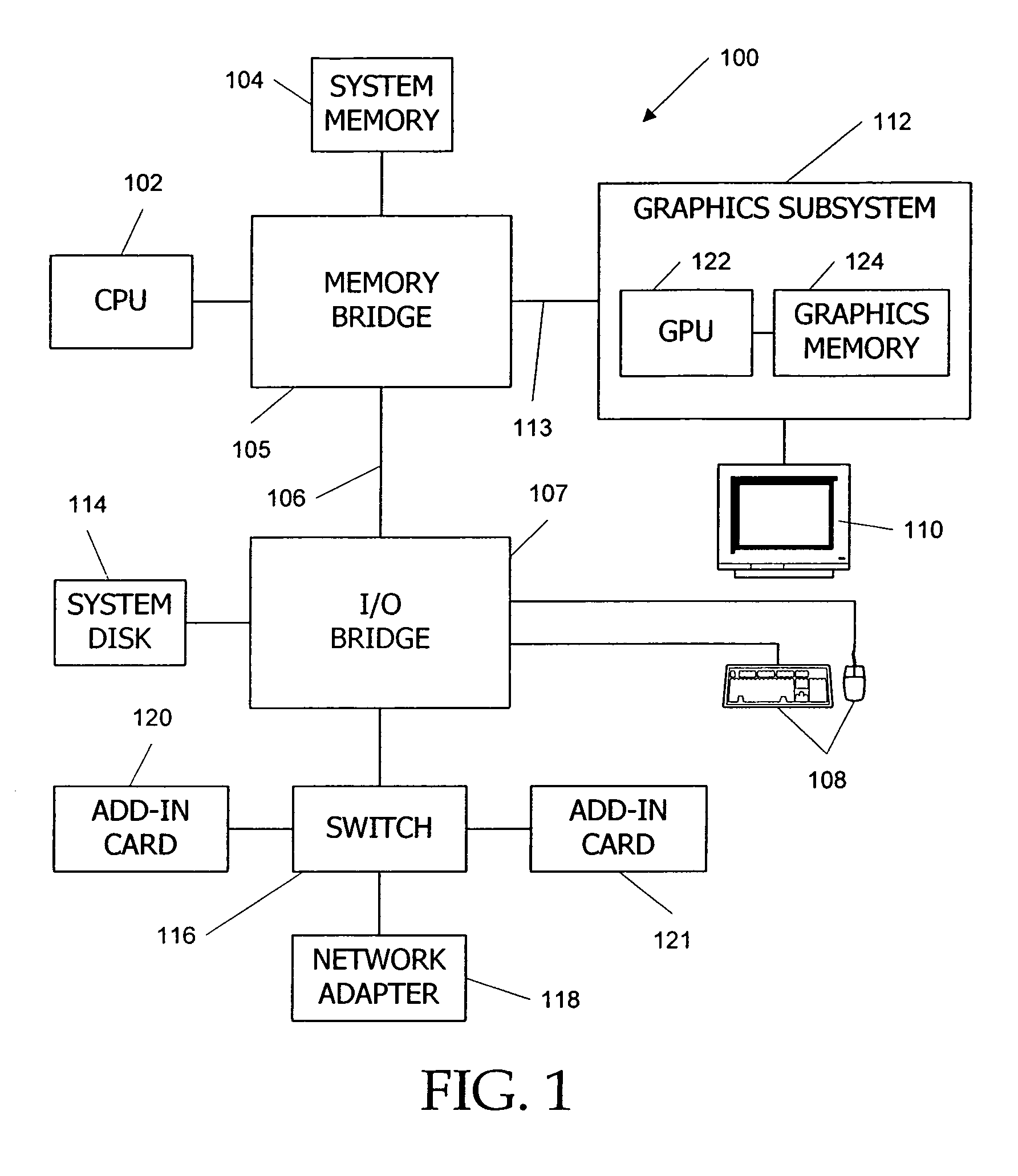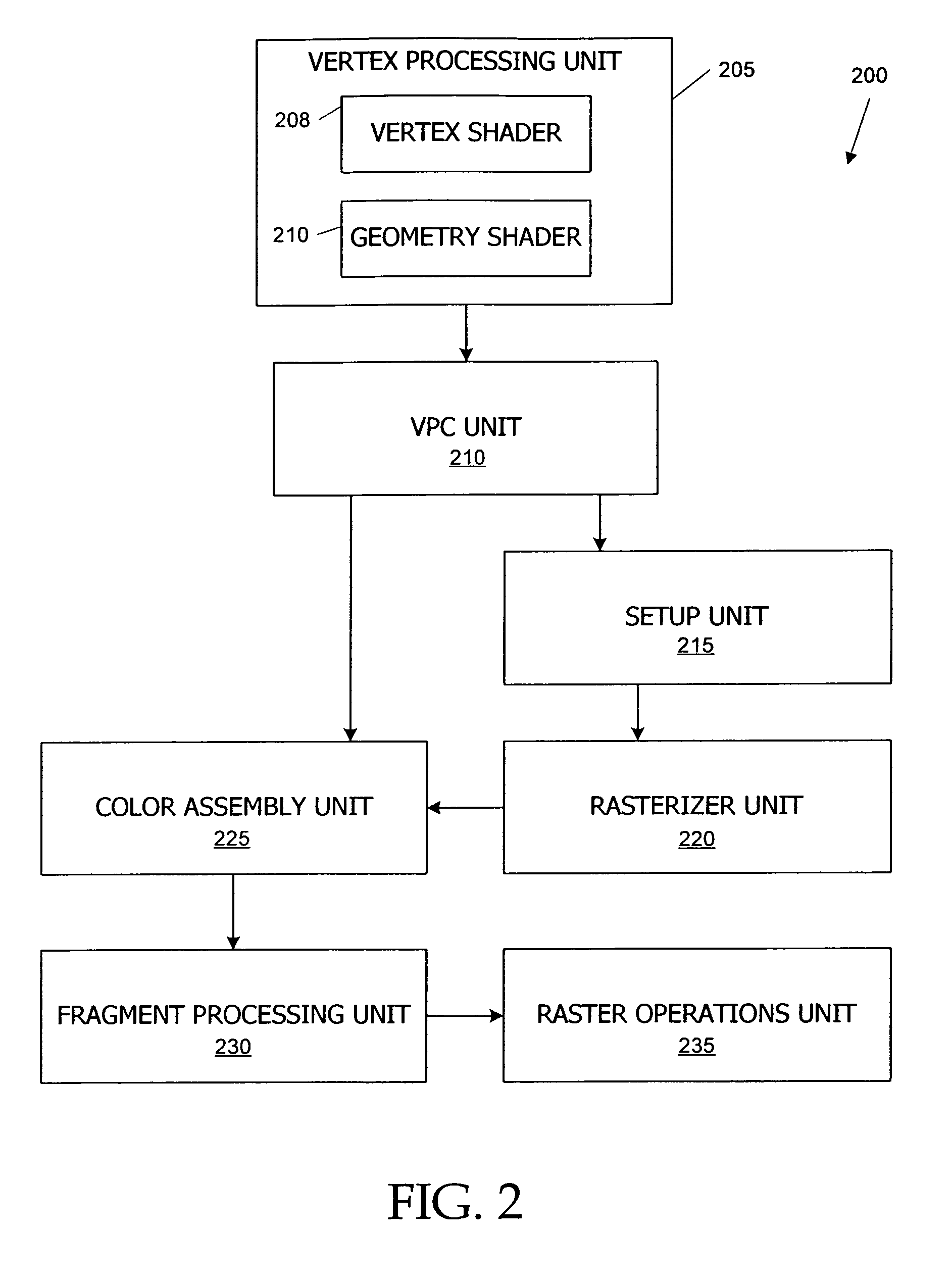Culling in a vertex processing unit
a processing unit and vertex technology, applied in the field of computer graphics, can solve the problems of increasing the number of attributes associated with each vertex, insufficient approach, and increasing processing bottlenecks, so as to improve the throughput of the graphics processor, reduce the number of vertices, and improve the effect of throughpu
- Summary
- Abstract
- Description
- Claims
- Application Information
AI Technical Summary
Benefits of technology
Problems solved by technology
Method used
Image
Examples
Embodiment Construction
[0024]Embodiments of the present invention provide culling of primitives within the vertex processing unit of a graphics processor. In some embodiments, culling is performed using a processing engine (e.g., a geometry shader) within the vertex processing unit that is capable of performing per-primitive operations. In one embodiment, the primitive processing engine culls primitives after clip space coordinates for the vertices have been computed but before at least one other vertex attribute has been computed. To the extent that culling reduces the number of vertices for which attributes other than clip space coordinates are computed, the throughput of the vertex processing unit is advantageously increased. In addition, to the extent that primitives are culled in the vertex processing unit, fewer vertices or primitives are delivered to the next downstream processing unit, thereby further improving throughput of the graphics processor.
[0025]FIG. 1 is a block diagram of a computer syst...
PUM
 Login to View More
Login to View More Abstract
Description
Claims
Application Information
 Login to View More
Login to View More - R&D
- Intellectual Property
- Life Sciences
- Materials
- Tech Scout
- Unparalleled Data Quality
- Higher Quality Content
- 60% Fewer Hallucinations
Browse by: Latest US Patents, China's latest patents, Technical Efficacy Thesaurus, Application Domain, Technology Topic, Popular Technical Reports.
© 2025 PatSnap. All rights reserved.Legal|Privacy policy|Modern Slavery Act Transparency Statement|Sitemap|About US| Contact US: help@patsnap.com



